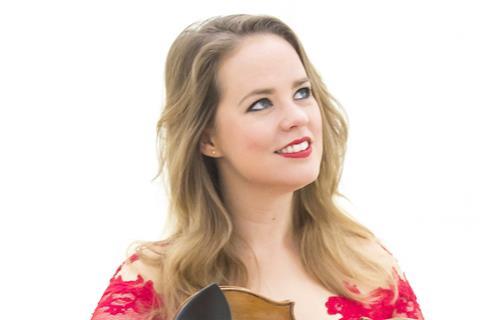To tie in with the release of her Nielsen CD, the Dutch violinist shares her insight into getting the most out of your practice

1. Slow practice
Ever since I was six years old, I’ve been practising this way, playing scales and double stops every day. At first I hated it; my older sister played the violin too, and because I knew all the songs from listening to her, I wanted to go quick, quick, quick and play them too. But my teacher insisted that I play the scales, and in time I started to love it because it’s such a nice way to warm up, to train your ears and to get comfortable with your instrument.
2. Record yourself
At a certain point in my career, when I became very self-conscious, I started recording myself regularly - both in rehearsals and practice. It helped me to hear what I needed to work on, but it also helped me to gain confidence.
I’m a very self-critical person and had always assumed that my playing wasn’t good enough, even when other people assured me it was. But then when I listened back to recordings of myself I’d think, ‘Oh, it’s not so bad.’ Often the recording sounds quite different from what you would imagine, which is why, in the run-up to making my Nielsen CD, I recorded a lot of rehearsals with the piano, just to make sure that the final product would tell the story I wanted to tell.
3. Focus on context
I’d always recommend finding out about the background of the composer whose music you are playing. Visiting Nielsen’s home and reading his biography, I realised what an unusual figure he was: how little he cared about tradition, but also how witty he was. He loved to make jokes: there’s that famous photo portrait series of him making funny faces at the camera. And there’s a lot of cynicism and weirdness in his music - think of the symphony without any structure.
But you need to be able to spot those qualities and make the most of them, which is sometimes difficult to do if you just learn the notes without knowing anything of the person behind them.
4. Practise sound colour
I do this with scales and easy exercises, focusing on different vibrato speeds, or different ways of creating colour with the bow. It’s something that every student should do: exploring the huge range of potential colours that exist between a simple forte or piano.
5. Don’t forget about the bigger picture
When I was learning about musical analysis during my studies I remember finding it quite boring. ‘Yeah, yeah,’ I’d think. But actually you need to understand why composers choose the structures that they do in order to understand, and communicate, the musical story they are telling.
If you don’t, then you’re just coming out with loose sentences, and you can’t expect anybody to follow your train of thought to the end. So when I start learning a new piece I always try to read through the score first, as though it were a book.
Read our review of Lisa Jacobs’s Nielsen CD here.











































No comments yet